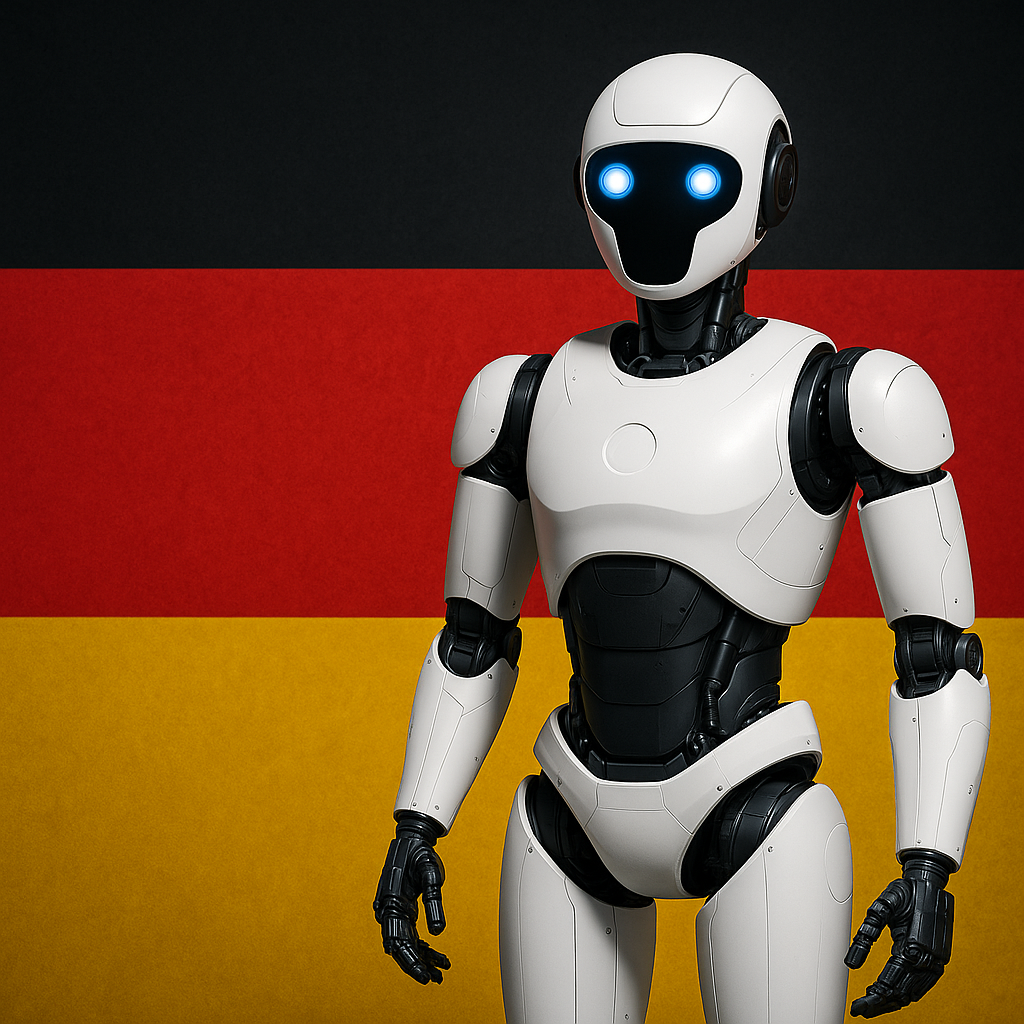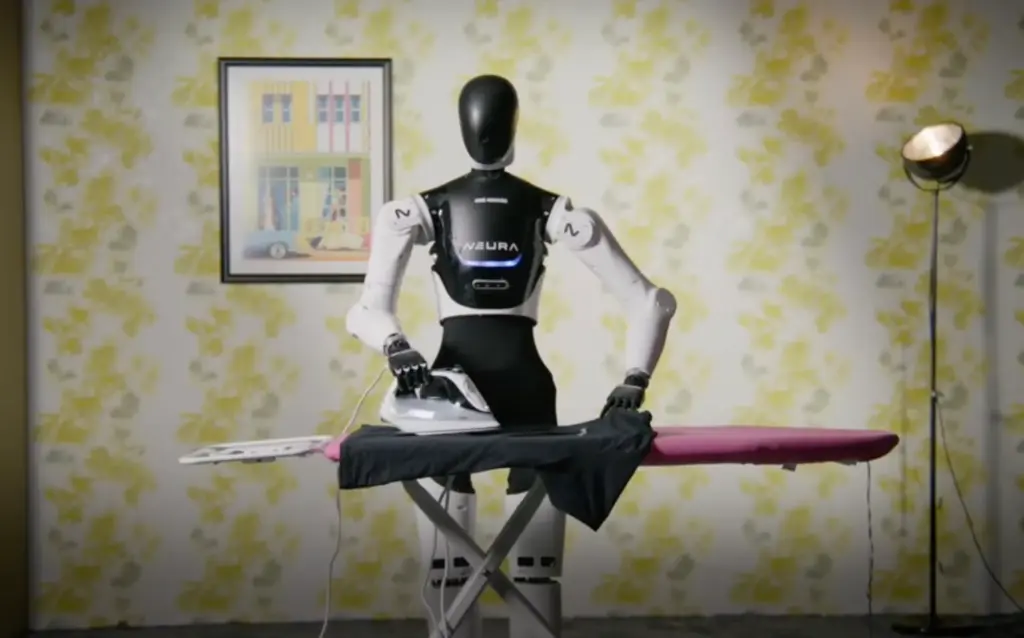Germany’s Quiet Robotics Giant Just Asked for €1 Billion
In a sleepy town nestled in southern Germany, a robotics company you’ve probably never heard of just made one of the boldest moves in tech this year: a €1 billion raise to fund its entry into the humanoid robot race.
And they’re doing it not in Silicon Valley, but in Metzingen, a town near Stuttgart best known for factory outlet shopping and Hugo Boss.
The company is Neura Robotics, and while Tesla, Figure AI, and OpenAI-backed startups dominate headlines, Neura has quietly been building what may be the world’s most advanced cognitive robots — and shipping them.
Now, with a humanoid robot named 4NE‑1 (“For Anyone”), a billion-euro order backlog, and a vision to put intelligent, helpful robots in homes and factories worldwide, Neura is gunning for the top spot in a race that could redefine work, care, and everyday life.
Let’s take a look at how this under-the-radar German innovator might just outpace the world’s biggest names in the humanoid revolution.

From Factory Cobots to Future Companions
Neura started humbly, just a few engineers in a spinoff collaboration with a Chinese firm in 2019. But by 2020, they had rebranded and struck out on their own with a clear philosophy: robots should adapt to humans, not the other way around.
That simple idea turned into a product line of “cognitive robots” — robotic arms (MAiRA, LARA), autonomous mobile bases (MAV), and a one-armed assistant on wheels (MiPA) — each built in-house, from the AI to the motor drives. And by 2023, Neura’s tech wasn’t just impressive — it was shipping, with customers like Kawasaki and Omron already integrating Neura’s cobots into their own lines.
But the big leap? That’s 4NE-1 — a fully humanoid robot, nearly human-sized, walking, talking, and ironing its way toward the mass market.

4NE‑1: “For Anyone”
At about 1.80 meters tall and built with a staggering array of sensors, cameras, and microphones, 4NE‑1 is designed to be as intuitive as a human coworker. It can respond to gestures, follow verbal instructions, detect your presence without touch, and even learn new tasks by demonstration.
In Neura’s demos, 4NE‑1 has already learned to:
- Fold clothes
- Carry boxes
- Iron shirts
- Serve food
- Play catch with children
In other words, it’s not just walking — it’s working.
Neura compares 4NE‑1 to a “physical smartphone”: a universal platform you can teach and upgrade over time. Whether in homes, hospitals, warehouses, or disaster zones, 4NE‑1 is built to fit in. The company plans to unveil the 3rd-generation version at Automatica 2025 in Munich, with production models expected to follow soon after.

€1 Billion: Why the Ask?
Neura is currently discussing a funding round of up to €1 billion. That’s more than 10× their last raise (€120M in early 2025) — but for good reason. The humanoid robot market is heating up, and speed is everything.
This raise would help Neura:
- Scale 4NE‑1 into mass production
- Expand its global presence (especially in the U.S. and Asia)
- Grow its AI platform — the Neuraverse
- Stay ahead of competitors like Tesla, Figure, and 1X
The company already claims a €1 billion order backlog, and with current customers ranging from Volvo Cars Tech Fund to Kawasaki, that number might not be a pipe dream.
🤖 How Neura Stacks Up in the Humanoid Race
Neura Robotics isn’t alone in the push to bring humanoid robots to life. A number of well-funded players are chasing the same goal: general-purpose humanoids that can work, assist, and adapt across environments.
So how does Neura compare to some of the big names?
| Company | Go-to-Market Strategy | Strengths |
|---|---|---|
| Neura Robotics | Cognitive robotics with full in-house tech stack, made in Germany | Sensor-rich, safety-first, already shipping robots, Germany-based production |
| Tesla (Optimus) | Leverage automotive-scale AI and manufacturing | Deep pockets, full-stack AI, massive scale potential |
| Figure AI | Silicon Valley blitz with OpenAI and investor hype | Fast iteration, OpenAI-backed, clean design, compelling demos |
| 1X | Remote-controlled humanoids (stepping toward autonomy) | Funded by OpenAI, unique “teleoperation” phase, compact form factor |
| Sanctuary AI | Language-model brain with task training in simulation | Neural interface vision, Canadian backing, service robot use cases |
| Agility Robotics | Warehouse-first humanoids via Amazon investment | Narrow use-case to scale quickly, real-world pilots (Digit) |
Neura stands out by:
✅ Already shipping intelligent robots (arms, mobile platforms, and assistants)
✅ Building the Neuraverse: a cloud platform for sharing and downloading robotic “skills”
✅ Owning its entire tech stack — from motors and sensors to AI and control software
✅ Manufacturing in Germany, betting on precision over cost-cutting and a bold move that bucks the outsourcing trend and aligns them with Europe’s push for sovereign, homegrown tech leadership
While others race toward viral demos and venture funding, Neura is quietly building an actual robot ecosystem — and with a €1B raise in the works, they’re ready to scale.

A Culture of Vision (and a Little Sass)
Beyond the tech, Neura is fascinating for its mix of utopian philosophy and real-world hustle.
They’ve staged fashion shoots with their humanoid.
Their CEO, David Reger, has been called Germany’s “Young Elon Musk.”
They sell t-shirts in a “Fan Shop” that say “We serve humanity.”
It’s all part of a bigger strategy: make robots not just useful — make them lovable.
Neura’s goal? Five million robots in everyday life by 2030.
Robots that fold your laundry.
That assist your parents.
That maybe even bring you a beer.

Why This Matters
Germany has long been a powerhouse of industrial robotics — but until now, it’s had no clear contender in the humanoid AI revolution. Neura Robotics is trying to change that.
Their €1B moonshot isn’t just about building a robot. It’s about giving Europe a real seat at the table in the AI+robotics future. It’s about redefining productivity, dignity, and human-machine harmony — and doing it with German engineering and global talent.
If they pull it off, Neura might just become the first European company to bring humanoid robots into homes and workplaces at scale.
So yeah — €1 billion? It might be worth it.

📺 Want to See It for Yourself?
🎥 Watch 4NE-1 doing chores
🧠 Explore their cognitive tech stack
🎤 Hear David Reger at AI for Good Summit
🆕 Browse Neura’s news
Would you trust a robot in your home?
Let me know your thoughts, and if Neura becomes the next Tesla of humanoids, remember where you heard it first.
📸 Photo credits: All product and promotional images of 4NE‑1, MAiRA, MiPA, and other Neura Robotics technologies are © Neura Robotics GmbH. Used here for editorial and informational purposes only.




